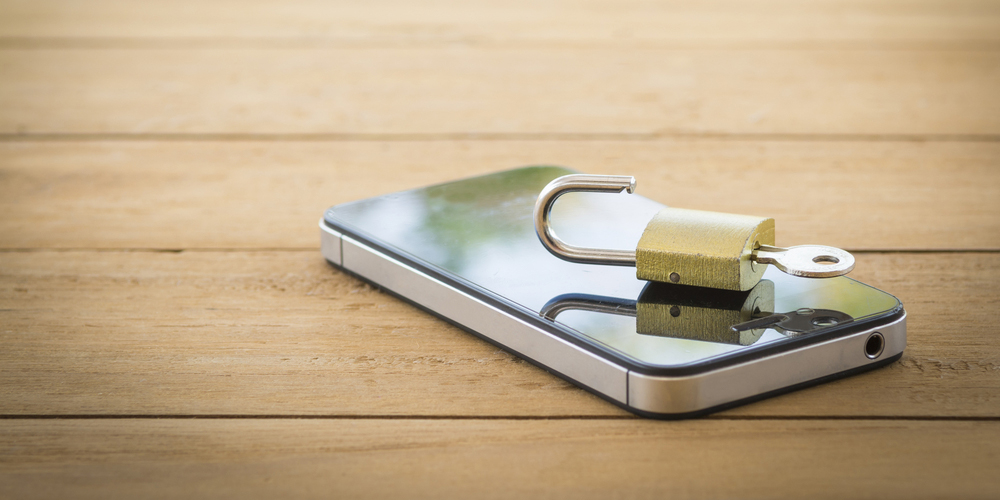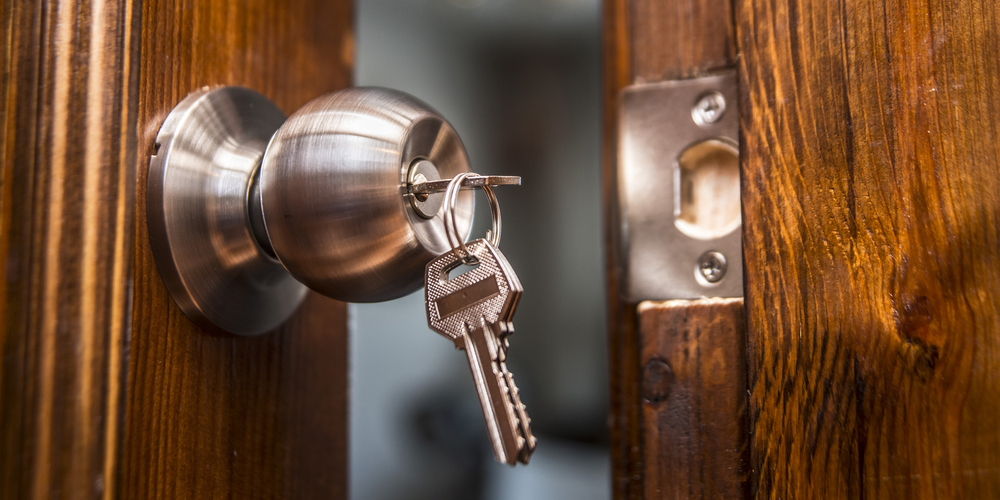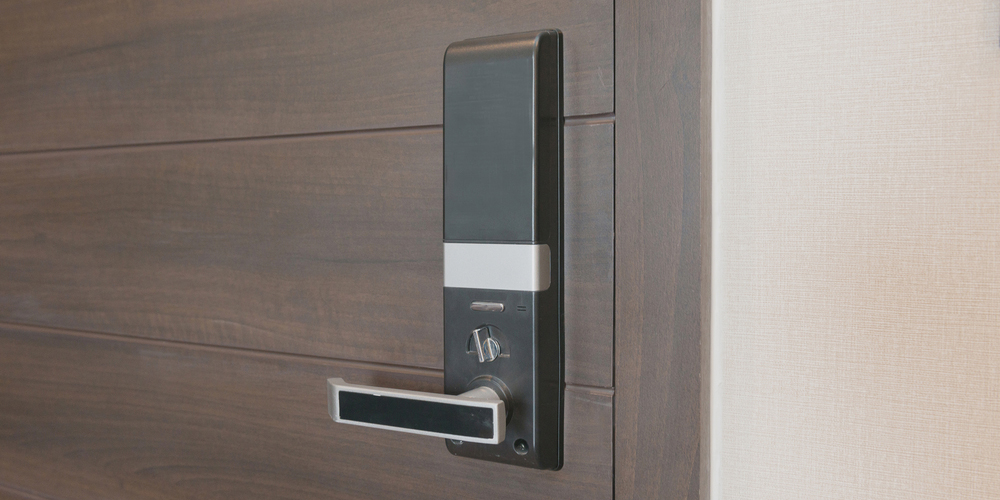Lock Blog
A resource for consumers, locksmiths, and security professionals
A resource for consumers, locksmiths, and security professionals

Locks have been a staple of homes, and the foundation of home security for centuries. They tend to be taken for granted, and it seems that locks have faded gradually into the background of security, even though they still hold a great amount of significance. Many people don’t realize how much of an impact their locks have until they are either locked out, or they find themselves unable to lock their residential doors, office doors, or car doors. Locks are important because they provide the cornerstone for security.
Imagine, if there were no locks in place in our society. A stranger could easily walk in off the street and make their way into your home. Locks are also meant to ensure privacy and restrict unauthorized access to certain areas. There is a lock on almost everything from doors to cell phones. This is because of how much the world has come to value privacy. Therefore, knowing which lock is right for you is important, because we don’t want you lost in home depot choosing the wrong lock.
Technology has done a lot of good for the world, and it even makes some of the most complicated tasks easier than ever to complete. This same driving force that birthed a generation of smart locks that many homeowners have fallen in love with. Smart locks promised to revolutionize the way people looked at locks because they allowed you to accomplish much more than what a regular lock could. They allowed you to control your home in ways homeowners never had. The main reason why smart locks seem so appealing to many homeowners is because it allows them to complete more actions with less work.
However, even though there are so many homeowners that are enamored with these smart locks, there are also a great deal of homeowners that believe that smart locks are not secure enough to protect their families. It is hard to declare any of these locks the better option without taking an in-depth look at them first. This is because there are many variants of each of these locks, and one might suit your lifestyle or door better than the other. In order to determine which of these locks might be more secure, let’s first look at the basic functions and attributes of each of these locks. Then we will take a more in-depth look at the differences.

The term ‘traditional locks’ is not something that many people are used to hearing. Granted, there are many different types of regular locks that are not automated, but up until smart locks carved out space for themselves, these old locks were just called locks. There are many variations of traditional locks, which can be used for a plethora of purposes. The term is essentially referring to locks that are not automated and locks that have to be manually engaged in order for the locking mechanism to be operated.
In the context of this article, the main focus will be on locks that can be used in either residential spaces or for commercial purposes. These more traditional locks range between deadbolt locks, mortise locks, knob locks, and a host of other variations. Most of these locking mechanisms are either engaged by the turn of a key, the twist of a thumb turn, or the push of a button. Either way, they are engaged manually and will also need to be manually operated in order to disengage the locking mechanism.
The majority of traditional locks work when a key is used to activate the locking mechanism, which will give it the ability to lock or unlock. Some very common examples of these traditional locks are pin tumbler locks, rim locks, and mortise locks. Let’s take a look at the pin-tumbler lock for example.
Pin-Tumbler locks are some of the most common locks used within residential properties. The locking mechanism in these locks features a series of spring-loaded pins that are in turn loaded into cylinders. The cylinders consist of a set of pins that are designated as the key pins and the driver pins. When the correct key is inserted into the locking mechanism the key pins are elevated, which pushes the driver pins upward.
Once the proper key is inserted into the lock, the driver pins and key pins align at the shear line. Then the key can be turned in the lock, to unlock, and sometimes lock, the mechanism. If the wrong key is used, the misalignment of the pins will block the key from being turned because the pins will be bound at the shear line.
This is not an easy question to answer, and that is due to the number of lock variations that homeowners utilize. The security levels that these locks give homeowners varies. For instance, the deadbolt is one of the most common exterior residential locks. There are usually two main types of deadbolts, single cylinder deadbolts, and double cylinder deadbolts. These locks are known to provide maximum security for homeowners but only if the right ones are used and if they are used in the right way.
Deadbolts are grouped according to grades that determine their relative strength. These grades are usually based on the relative strength, longevity, and durability of these locks. They range from 3 to 1, with 3 being the lowest grade and 1 being the highest grade. ANSI (American National Standards Institute) Grade 1 deadbolts provide homeowners with the maximum security for their residential locks. However, the thing that allows these locks to be as secure as they are, are the additions that can be made to ensure that they are as secure as possible.
Traditional locks can usually be enhanced by using solid metal strike plates and longer deadbolt throws. You can also invest in locks that are resistant to lock picking, lock bumping, and other bypass methods. In addition to these methods, homeowners can make their locks stronger by using security pins within the lock cylinder itself that will make it much harder for anyone to tamper with.
In order to determine how secure a traditional lock will be, a number of factors have to be taken into consideration. These factors include the placement of the lock, how often the lock will be used, as well as whether or not this lock is meant to function alone. Let’s break these points down.
Locks that are meant to be used primarily for exterior doors will function best when they are placed on exterior doors, but they will also work well for interior doors (bathrooms, closets etc). Although installing a Grade 1 deadbolt on your bathroom door is overkill. However, looking at the opposite spectrum of things, if you install a knob lock on your front door (without adding a deadbolt to it), then you are leaving your home vulnerable to attacks and burglars.
Also, the continued strength of your lock will depend on how frequently it is being used. If a homeowner uses a Grade 2 or Grade 3 deadbolt for an interior door that does not get used often, this will not likely develop into a security hazard. However, if they use a Grade 3 deadbolt, on the front door of their home, which sees a considerable amount of daily traffic, then there is a flaw in their security that can be exploited.
In effect, traditional locks are pretty secure if they are used in the right way, and if homeowners have them installed with security in mind. In order to do this, it is best to consult with a professional residential locksmith who has knowledge and foresight that will help homeowners get the best out of their locks.

In their simplest form, smart locks are automated versions of traditional locks. In most cases, a smart lock will make use of the traditional lock mechanism, but the lock mechanism can be engaged electronically or remotely. These locks are different because they require a different interaction (between the user and the lock) than traditional locks. The name ‘smart locks’ also stems from their ability to be controlled and operated by smartphones, as well as their ability to integrate with other smart devices.
These locks allow homeowners to control and monitor their locks in a way that traditional locks do not. If the smart locks are working the way it is intended to, it provides unparalleled ease of access and comfort. However, this does not always mean it is the most secure option. Smart lock manufacturers tend to focus more on the efficiency and added features that the lock brings to the table, which makes them skimp on the security factors that have made locks a hallmark for every home.
Smart locks, much like traditional locks, require a lock and a key in order to work properly. A smart lock has to receive its operational instructions from a pre-authorized device, as well as a cryptographic key in order for it to perform its locking and unlocking process. In addition to this, smart locks are also able to monitor the status of the lock and send pertinent alerts to authorized devices. In most cases, this would be the homeowner’s smartphone. These locks are considered to be a huge part of the smart home, and they are capable of integration with many other smart devices and products.
The key for smart locks is not a physical key as it is for traditional locks. These keys are either special key fobs or a set of instructions issued by home automation protocol, which will authenticate that it is the proper key for the lock. Some smart locks also have the ability to hand out temporary keys to third parties, and these temporary keys function as spare keys.
The security of smart locks has been in question since before their inception. It did not become apparent to many people that this was even an issue until after homeowner’s started to acquire smart locks. This might have been because smart locks were not necessarily advertised for their security capabilities, but they were marketed by talking about all the new and cool things that a smart lock could do for an individual’s home. For instance, some smart locks give homeowners the ability to remotely monitor the status of their locks, as well as remotely operate their locks. These features are some of the things that make a smart lock truly unique and the reasons why some people flocked to them.
However, the issue of smart lock security was one that gradually made its way to the foreground of the conversation. Smart locks made little architectural improvements to the basic design and components of traditional locks, so they each essentially start out on the same security threshold (in most cases). In this sense, most people would think that their smart locks are better than their traditional locks because they are being afforded the same level of security with added features, but this isn’t always the case.
Most smart locks will work with an existing deadbolt, which does imply that they are offering a much more secure lock than if you were to use a Euro Cylinder lock on your front door. Though this might be better, there is a drawback to this. Due to the specific nature in which smart locks are designed, it is hard to make additions to them. A perfect example is the August Smart Lock, which can only work with thumb turn deadbolts and will not work with double cylinder deadbolts. Another example is the Kevo Kwikset, which comes with its own hardware (lock cylinder, interior set up, etc.) and is meant to replace whatever hardware a homeowner had in place.
With a regular traditional lock, homeowners can make modifications and additions that will ensure the lock is more secure. Without any security additions, most of these smart locks are vulnerable to simple bypass methods that anyone with the right training and practice could easily exploit. The lock cylinder in the Kevo, for example, is notoriously easy to bypass. Essentially, given enough time and with enough knowledge about a lock, every lock can be picked, but you want to make sure that your lock is extremely hard to bypass.
Aside from the physical aspect of smart locks, many people have expressed concern with the other security doors that it opens up. Traditional locks only needed to be bypassed on one front, which is the physical side. If you are able to tamper with the physical aspects of any lock long enough, you will have a good chance at bypassing its security. With smart locks, physical security isn’t the only thing that a homeowner will have to worry about. The cyber aspect of smart locks makes them vulnerable to external cyber attacks, which is something that traditional locks never had to deal with.
Cyber attacks on smart locks have become more common, and many smart lock manufacturers have found themselves scrambling to try and deal with the blowback of smart locks being hacked. These cyber attacks can be executed by gaining direct access to the lock or by gaining access to the network that the lock is on. This presents a new realm of vulnerabilities that homeowners were not exposed to before. Cyber attacks put personal data, confidential information and other important aspects of an individual’s life at risk. In most cases, a homeowner that owns a smart lock will most likely have one or two more smart devices that are being used in conjunction with their smart lock. If the smart lock is breached, it tends to put your entire home security network at risk.
There are measures that people can take to make sure that it is harder for a burglar or criminal to hack their smart lock and their smart devices. This normally means that they will have to invest in new equipment to bolster the security of their smart lock. These measures range from investing in a high-security firewall for your home network to making sure that your network passwords and access codes are regularly changed.
In my opinion, I would say that at this point in time, traditional locks are much more secure than smart locks. Traditional locks have been tried and tested over years of use, which makes it easier for homeowners to gravitate towards the lock brands they trust. This has given manufacturers the ability to make locks stronger and better, as well as more resistant to anything that a burglar might throw at it. In addition to this, homeowners can make modifications and additions to their locks that make them stronger. For instance, they can add security pins, make the deadbolt longer, use longer screws to install the lock to make it more resistant to blunt force trauma, etc.
Smart Locks, on the other hand, have been around for just a short amount of time and within that amount of time, their flaws have greatly outshone their benefits. This is not to say that these locks are not good, they are, but they focus more on convenience, integration, and ease of use rather than security. In doing so, they neglect the primary objective of any lock because they are focused so heavily on making its secondary features appealing. In addition to this, smart locks have also added a new layer of vulnerability that traditional locks never had to deal with, which is the cyber threat that smart locks face. This inherently means that smart locks have to be fighting the security battle on two fronts, the physical end, and the cyber end. As of now, this is not something that they have handled all too well.
Category: Lock Types, Safety & Security, Smart Home